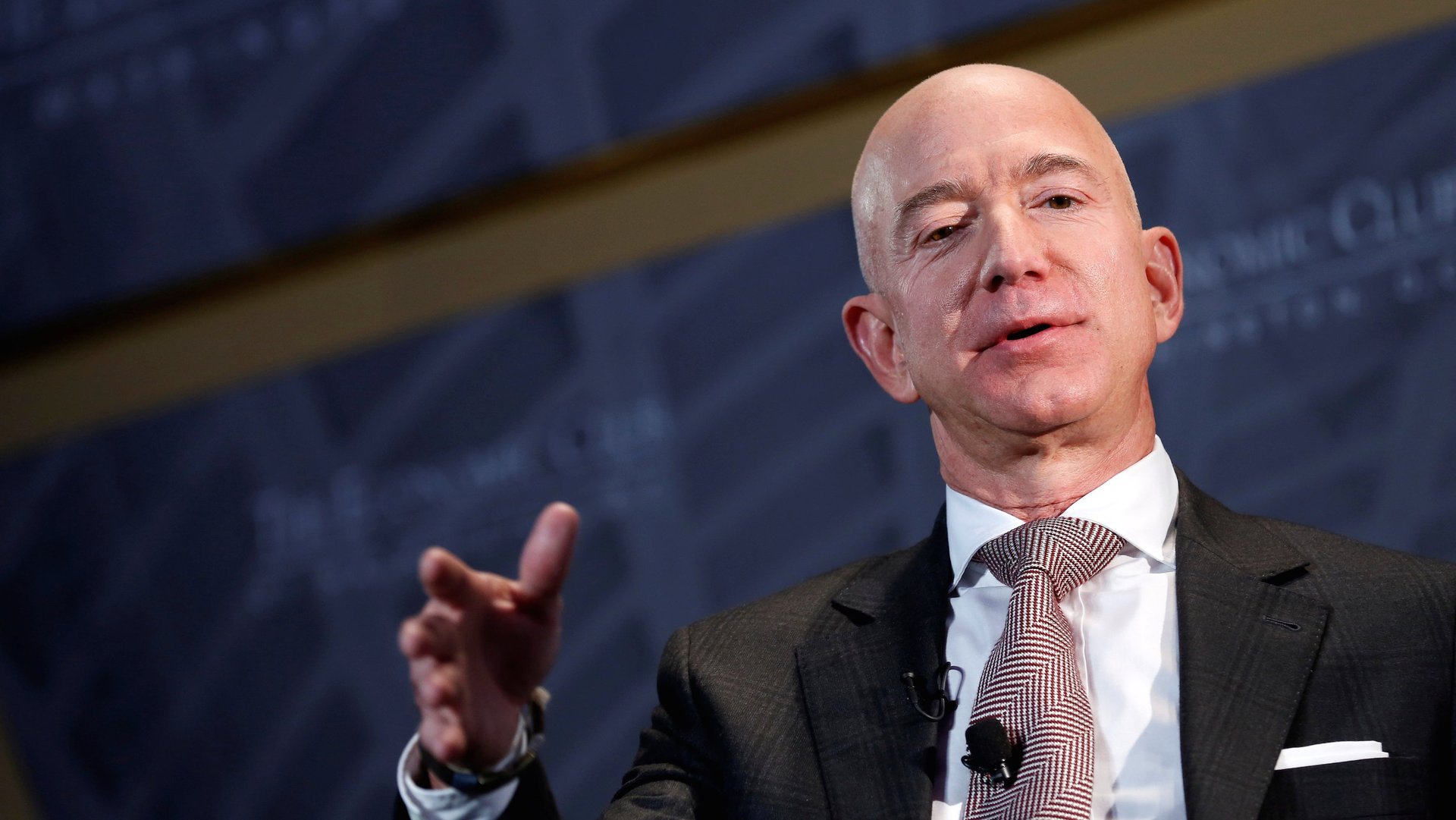Jeff Bezos says Amazon needs to change to be “Earth’s Best Employer”
In his latest and last annual letter to shareholders, Amazon founder and outgoing CEO Jeff Bezos set a new goal for the $1.7 trillion e-commerce giant: to become “Earth’s Best Employer and Earth’s Safest Place to Work.” He also admitted that the company has some work to do in order to live up to that ambition.


In his latest and last annual letter to shareholders, Amazon founder and outgoing CEO Jeff Bezos set a new goal for the $1.7 trillion e-commerce giant: to become “Earth’s Best Employer and Earth’s Safest Place to Work.” He also admitted that the company has some work to do in order to live up to that ambition.
That section of the letter is a clear response to the ongoing national conversation about the Amazon’s treatment of fulfillment-center workers in the US. The discussion has gained steam over the past year in the wake of concerns over worker safety during Covid-19, and garnered further attention in the past few months as warehouse workers at a Bessemer, Alabama, site voted on whether to unionize. Ultimately, 1,798 Bessemer workers voted against forming a union, while 738 were in favor.
Bezos, who is assuming the role of executive chair at Amazon, writes:
“Does your Chair take comfort in the outcome of the recent union vote in Bessemer? No, he doesn’t. I think we need to do a better job for our employees. While the voting results were lopsided and our direct relationship with employees is strong, it’s clear to me that we need a better vision for how we create value for employees—a vision for their success.”
The letter doesn’t delve into too many specifics about what that vision might look like: “On the details, we at Amazon are always flexible,” Bezos writes. But he does highlight steps Amazon is taking to prevent injuries caused by repetitive motions, noting that the company is “developing new automated staffing schedules that use sophisticated algorithms to rotate employees among jobs that use different muscle-tendon groups to decrease repetitive motion and help protect employees from MSD [musculoskeletal disorders] risks.” Bezos also says that the company will work to improve employee satisfaction by “continuing to lead on wages, on benefits, on upskilling opportunities, and in other ways that we will figure out over time.”
While it’s noteworthy that Bezos is admitting that Amazon has any shortcomings at all as an employer, he also uses the letter as an opportunity to defend Amazon against some common criticisms. While some warehouse workers have told the media about grueling productivity quotas that can lead to injuries and leave them with little time to take care of basic needs like going to the bathroom, Bezos says that Amazon allows warehouse workers informal breaks as well as 30-minute breaks built into their schedules, and that its productivity goals are not unreasonable. “We set achievable performance goals that take into account tenure and actual employee performance data,” he writes.
The letter also performs a neat rhetorical trick to suggest that news reports about Amazon employees’ subpar working conditions are actually disparaging workers themselves, rather than making allegations against the company. “If you read some of the news reports, you might think we have no care for employees,” Bezos writes. “In those reports, our employees are sometimes accused of being desperate souls and treated as robots. That’s not accurate. They’re sophisticated and thoughtful people who have options for where to work.”
Bezos’ growing focus on Amazon workers
Even with these caveats, Bezos’s letter reflects the growing pressure on Amazon to grapple with warehouse workers’ concerns, thanks to protests and organizing efforts from Amazon workers themselves as well as scrutiny from the media, labor activists, and politicians. Fifteen Democratic senators, including Elizabeth Warren and Bernie Sanders, called on Bezos to alter the “profit-at-all-costs culture at your company” in a public letter in February, with a particular focus on reducing worker injuries.
In recent years, Bezos’ letters have devoted increasing space to discussing Amazon warehouse employees. Last year’s letter, which focused on the impact of Covid-19 on the company and its workers, emphasized the safety measures Amazon had implemented in warehouses and Whole Foods stores and its decision to temporarily raise hourly wages by $2 in the US and increase overtime pay. (The company ended the hazard pay policy on June 1 of 2020, though the pandemic continued, and has come under criticism for taking insufficient steps to protect warehouse workers from Covid exposure. In February, New York attorney general Letitia James filed a lawsuit against Amazon over the company’s alleged “flagrant disregard for health and safety requirements” during the pandemic.)
Bezos’ shareholder letter for 2018, meanwhile, discussed Amazon’s decision to increase the minimum wage to $15 per hour for US employees, and challenged competitors to follow their lead. “Better yet, go to $16 and throw the gauntlet back at us,” Bezos wrote.
By contrast, the previous few years (in 2017, 2016, and 2015) devoted minimal space to Amazon’s blue-collar employees, focusing instead on topics like how the company maintains a culture of high standards, fends off stasis, and grew Amazon Prime.
In this sense, Bezos’ latest letter is a reminder that forming a union isn’t the only way to get big companies to think about reforms. The mere threat of unionizing, in addition to public-relations campaigns, can also push companies to respond to workers’ concerns. And given that consumer habits are intertwined with the fates of warehouse workers, it’s up to everyone who’s ever loaded up an Amazon shopping cart to help hold the company accountable for what it does next.